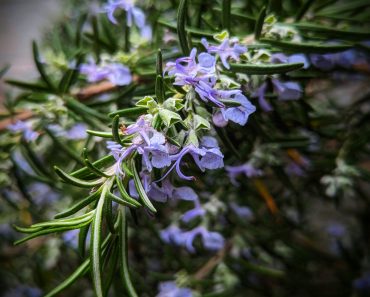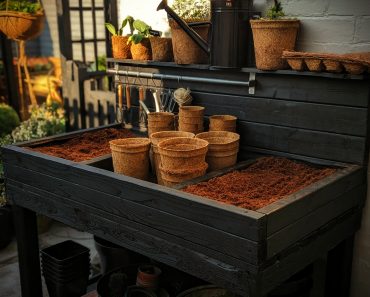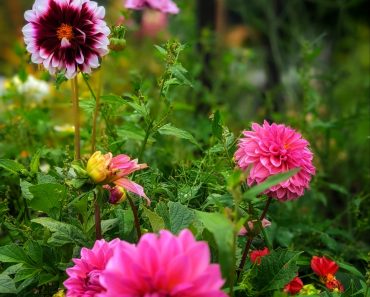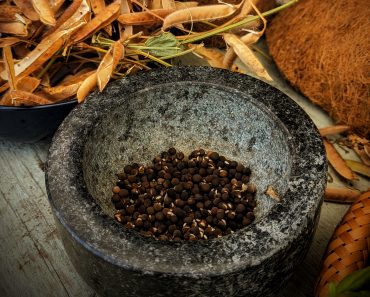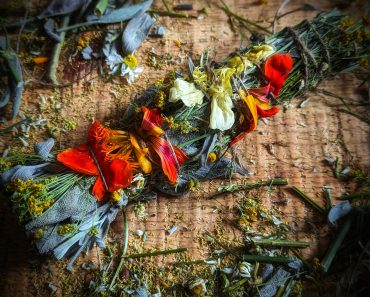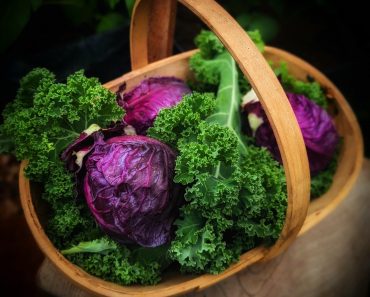Pendulous Sedge or Carex Pendula is a wonderful evergreen Perennial grass with elegant narrow leaves and green flower spikes that turn a lovely honeyed brown as seeds develop. A vigorous growing grass, perfect for damp or shady spots in the garden. A spectacular Ornamental grass that brings the green 12 months of the year! Here’s how I Grow Mine…
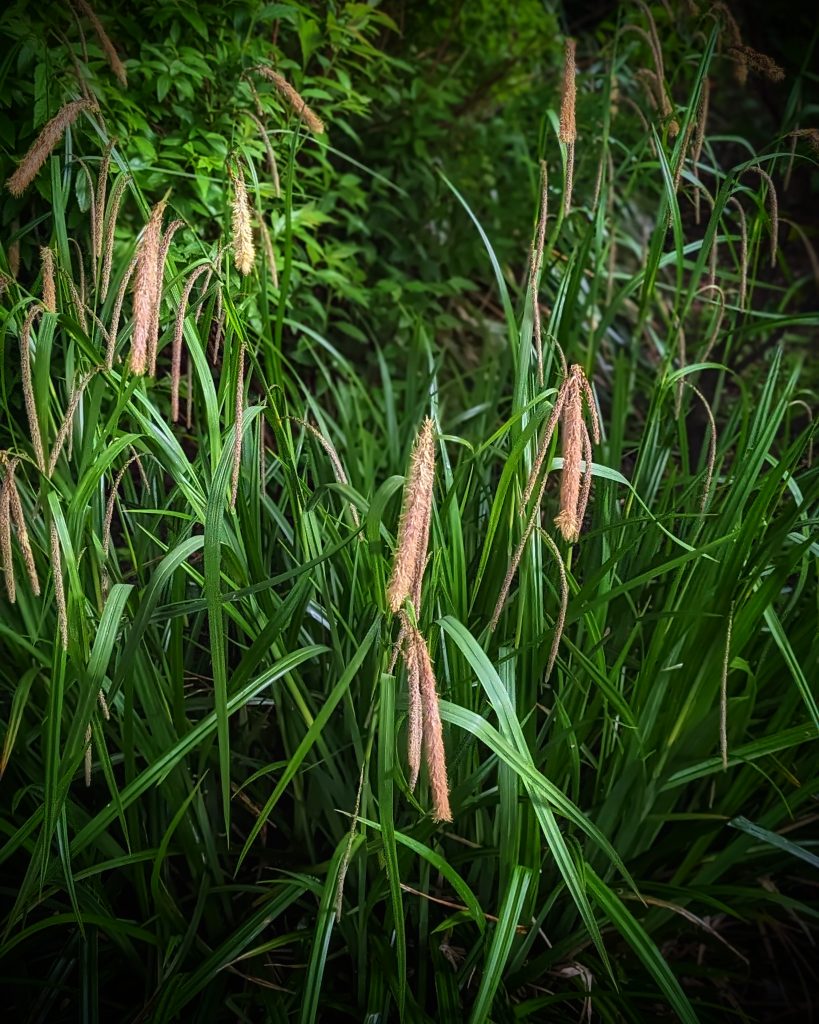
This post may contain affiliate links please see my disclosure policy
Pendulous Sedge Origins
Pendulous sedge has a long and ancient history, it is believed it originated in central, western and southern parts of Europe (including the UK) It is also a common wild plant in north-west Africa, Madeira and parts of the Middle East. It is now naturalised in New Zealand and Australia and can mostly be found in the USA in the San Francisco Bay area and Sacramento Valley in California.
So Many Names!
Due to This plants spread it is known by many names, but lets begin with its binomial name ‘Carex Pendula’. ‘Carex’ is derived from the old latin word meaning Reed grass, sedges and rushes and ‘Pendula’ from the latin word pendeo meaning to hang.
Other names for Pendulous sedge are weeping sedge, hanging sedge or drooping sedge, likely named due to the plants droopy appearance.
Where does Pendulous Sedge Grow?
Even if you are not growing this beautiful grass in your garden, you have more than likely come across it on your travels! Pendulous sedge is spread far and wide throughout England and Wales, mostly found in ancient woodlands, pond margins and shaded damp environments
Pendulous Sedge Characteristics
What does Pendulous Sedge Look Like?
Pendulous sedge is an evergreen perennial that forms large, dense clumps of grass-like leaves. Its long and slender flower spikes droop and sway in the breeze, hanging loosely on the end of thin stalks.
Leaves: The leaves are roughly 2cm wide and 1m long. They are Dark green and slender.
Flowers: Are long, light brown and pendulous spikes that can reach lengths of 2 metres (including the stalks)
Seeds: Seeds are small and there are hundreds on each flower! The seeds first start off green, later ripening and turning brown
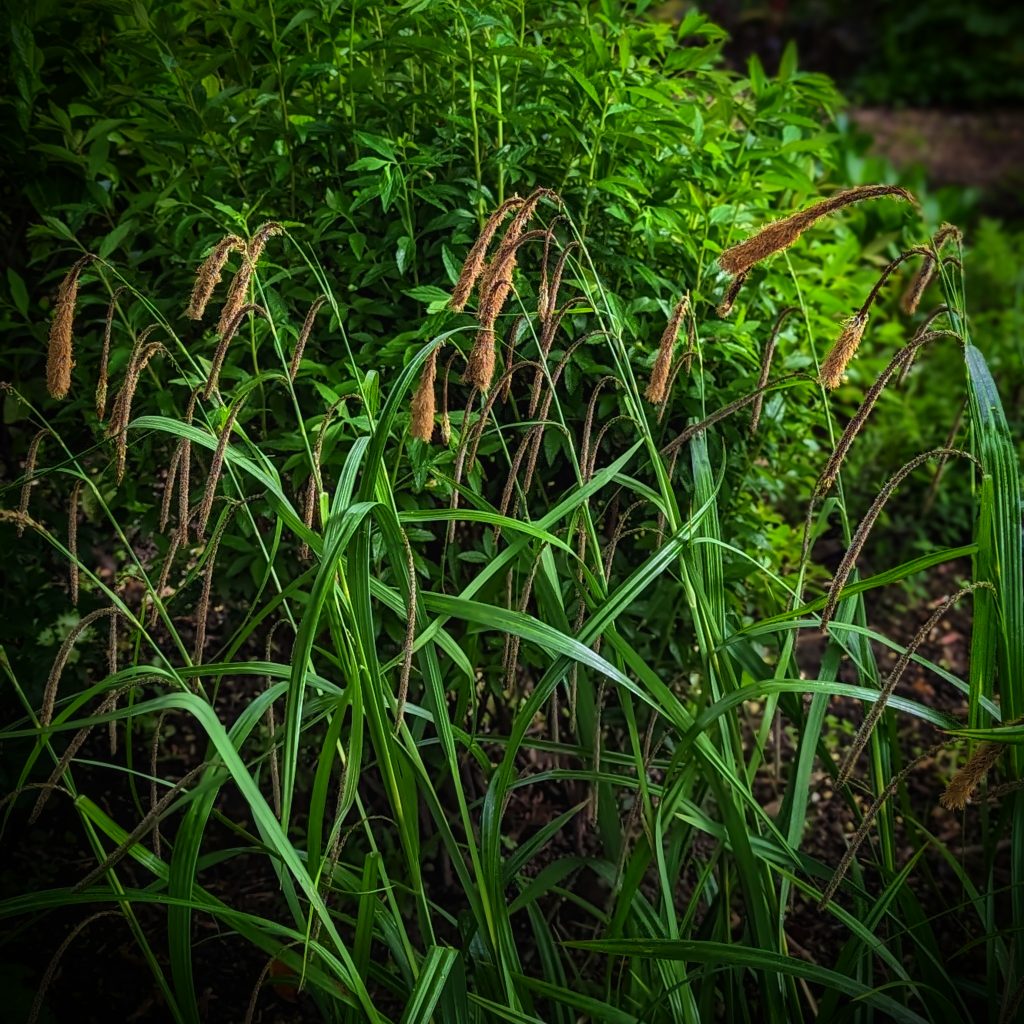
Will Pendulous Sedge self Seed?
Yes! With Vigour! So should you want to avoid this, be sure to remove the flowers before they disperse their seeds.
5 Interesting Pendulous Sedge Facts You Probably Didn’t Know!
1. An Ancient Medicine– In Europe Pendulous Sedge has been used in traditional medicine for centuries! It was believed to have a number of healing benefits and was often used to treat headaches, wounds, and fevers. (*We now mostly regard it as an ornamental plant for admiring and not for medicinal treatment)
2. Basket and Rope Making-The Strong Leaves of Pendulous Sedge was at one time a valuable material for some cultures! The plant was a natural source of weaving materials for constructing baskets and even making rope!…I am definitely going to try this!
3. Warmth For Winter– Many moons ago Pendulous Sedge would be dried, pounded and stuffed into clothes and bedding for winter insulation. A free material to keep the family warm over the colder months
4. Ecological Benefits -Pendulous Sedge is incredibly important to the local ecosystem providing shelter for Amphibians and mammals, nectar for insects and seed for the birds. The birds also use foliage from Pendulous Sedge as a nesting material!
5. Edible seeds!-Yep! The ripe seeds of pendulous sedge (when they are light brown, not green) are edible and can be stripped from the seed heads- Just like the harvesting process used for wheat and barley, their husks need to be removed first and the small brown seeds will be revealed. You can then go ahead and either toast the seeds and add them to breads, soups, stews or salads or grind them and make flour!
Planting Ideas for Pendulous Sedge
Pendulous Sedge is a very fuss free, adaptable plant and an excellent choice for a variety of landscaping and restoration projects. At home I grow mine in a shaded part of the garden and it does very well! They will also grow beautifully in a sunny spot and semi shade, they also make ideal pondside plants for their love of damp soil conditions.
Can You Grow Pendulous Sedge in Pots?
I do! Just be sure to divide every 2-3 years.
*The same Goes For Ground Grown Pendulous Sedge….
How To divide Ornamental Grass ?
Lift grass from the pot or from the ground and split in half using a spade, or even a sharp knife or saw if it is particularly tough! Then Replant! this process reinvigorates the plant leading to a much healthier looking show later on
When To Divide Ornamental Grass ?
Late winter to early spring.
How To Grow Pendulous Sedge (Carex Pendula) from Seed
Affiliate links
The great thing about Carex Pendula is you can sow seeds any time of the year except for Early- Mid Summer
- Sow in pots, modules or trays on the surface of a moist, free-draining compost and cover with a very light sprinkling of compost
- Cover with a propagator lid, cling film or polythene bag and place on a windowsill that does not get direct sun. Make sure the compost remains moist. Remove cover when seedlings emerge. Germination should take place within 14-28 days
- When seedlings are large enough to handle, prick out and pot on into individual pots
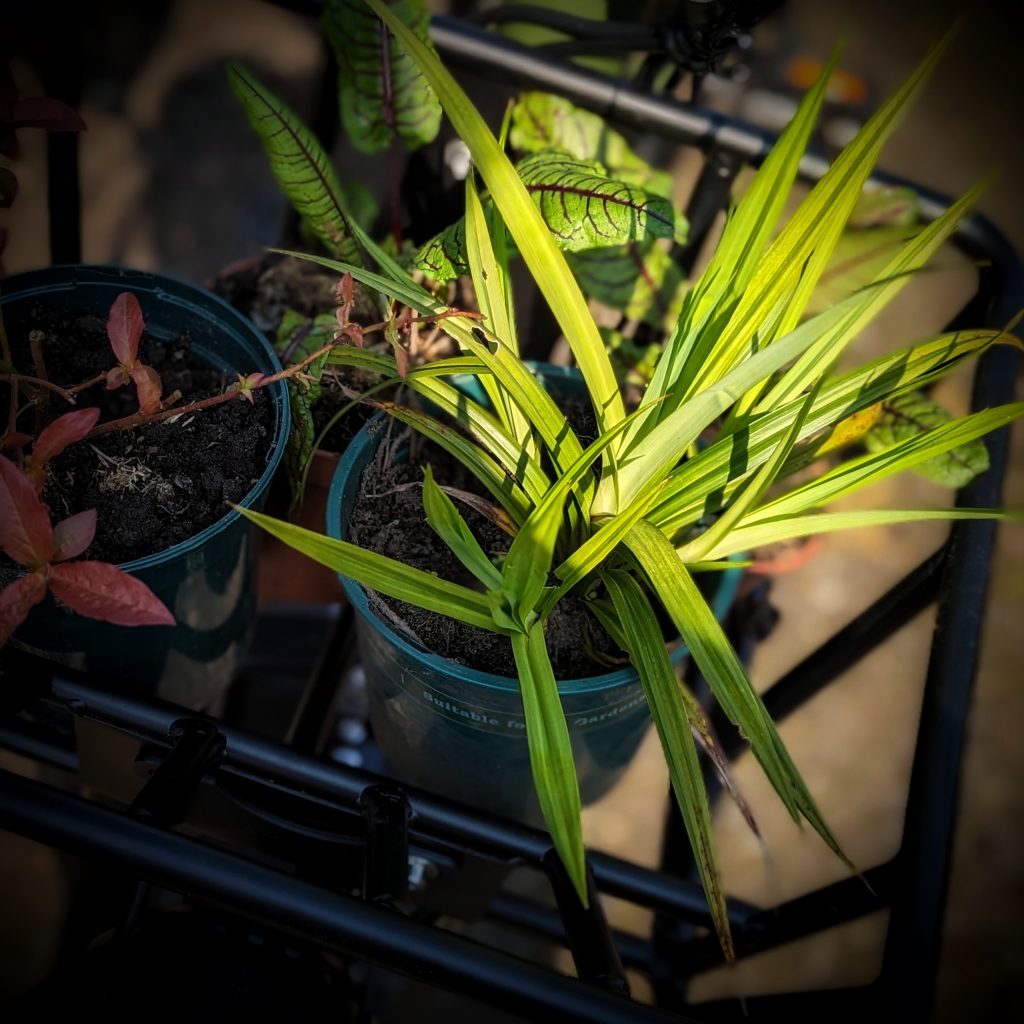
- Plant Out once all risk of frost has passed in spring* Be sure to harden off indoor raised plant’s first
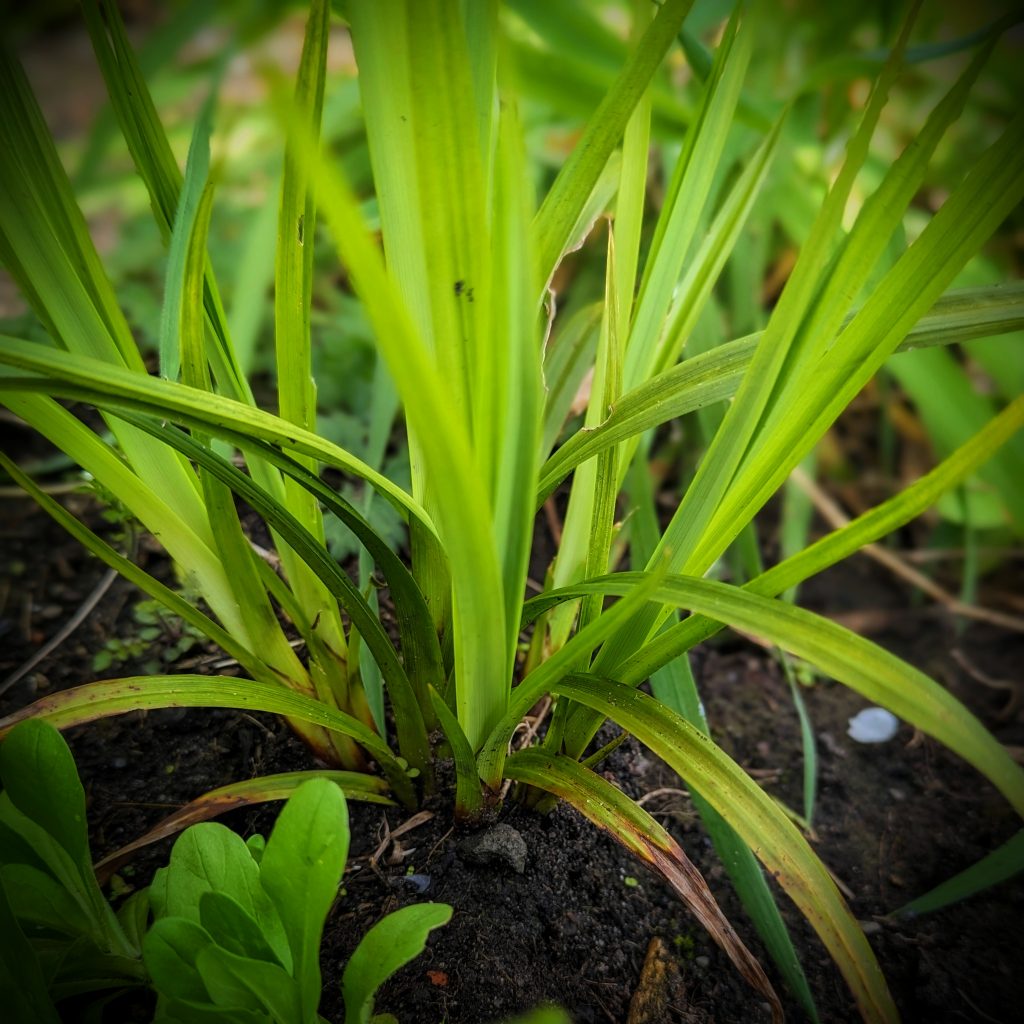
What Does Hardening Off Mean?
Plants raised indoors or in a greenhouse environment, need to be acclimatised to cooler temperatures and increased air movement for about two to three weeks before they are planted outdoors permanently. This is a ‘toughening up’ practice to prepare the plants for their new environment.
How to Harden Off
Place your plants out for a couple of hours in a shady part of the garden. The next day, leave them out again for two hours, but this time allow the plants an hour of direct sunshine in the morning. Gradually continue to increase the length of time the plants are in direct sunshine over the course of roughly two weeks.
Would You rather just Buy the Plant? Buy Here
Where To Plant Pendulous sedge?
Plant in Shade, Part shade or a sunny position or in shallow ponds, perfect for lining a waters edge no more than 10cm deep in water. Use a planting basket of at least 10 cm across for one plant, or for group planting on a waters edge, plant several in a larger basket.

Pendulous Sedge water Requirements
Pendulous Sedge Prefers moist soil, it’s almost impossible to overwater!! You can also plant in water up to 10cm deep.
Pendulous Sedge Care
Remove and shabby looking or dead leaves and flowers in spring. If needed, cut back Pendulous Sedge (by up to half) from April to July. Do not cut back in Autumn or Winter.
Growing a Garden? Take a look at these helpful posts!
How To Grow Briza Maxima Grass
Love some Garden DIY? Take a look at these Frugal DIY Posts…
10 ways to create a vertical Garden
How to Build a Bee hotel from Pallet wood
How To Make A Rustic Fence with Tree Branches
How To make a garden arch with tree branches
Looking For more ‘Homely’ Inspo ?
Have a Nosey Around the Blog! See what i’ve been Baking, Growing and Drinking! Also, pop over and say Hi on Instagram

